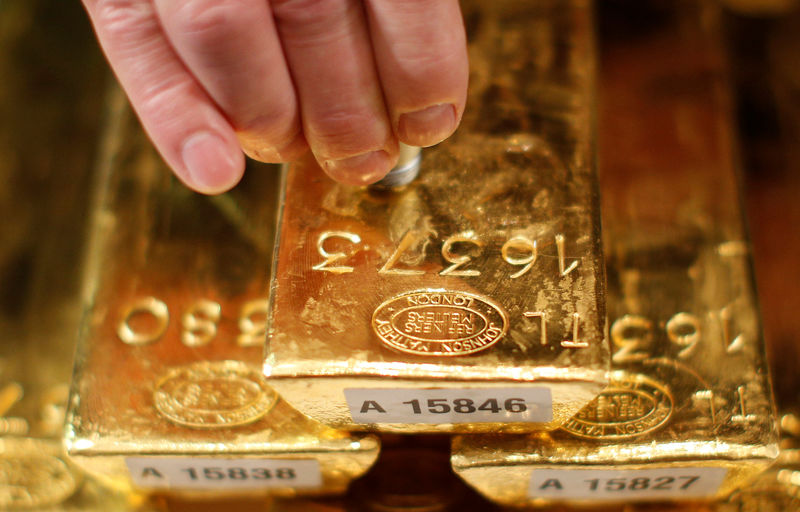By Geoffrey Smith
Investing.com - Gold prices retreated from earlier highs on Tuesday to be little changed from Monday's close, after a strong opening on Wall Street put at least a temporary hold on inflows into safe havens.
By 11:37 AM ET (1537 GMT), gold futures for delivery on the Comex exchange were up 0.3% at $1,766.55 a troy ounce, having earlier touched an intraday high of $1,788.75, the highest since October 2012.
A weaker dollar helped sentiment, with the dollar index falling below 99 for the first time since the end of March.
Spot gold was up 1.2% at $1,735.03 an ounce, while silver futures were up 3.3% at $16.05 - a one-month high - and platinum futures were up 8.6% at $814.50 an ounce.
The arguments behind gold's recent rally - collapsing growth and the prospect of collapsing returns on safe-haven government bonds -- received fresh ammunition again on Tuesday as the International Monetary Fund forecast the world's worst recession since the 1930s. Updating its World Economic Outlook, the IMF said that world GDP by the end of next year - even after a vigorous rebound - could be 5% below its pre-Covid-19 trajectory.
The collapse in economic activity is threatening to blow out government deficits that, for many, will only be possible to finance through extensive financial repression. The U.K.'s Office for Budget Responsibility said on Tuesday that it expects the U.K. deficit to expand to 14% of GDP this year, as GDP contracts by 35% before rebounding.
Gold was also supported by continued unease in Europe at the failure of the euro zone to stand behind some of its most indebted members. A meeting of eurozone finance ministers that ended late on Thursday finally signed off a three-pillar support package worth a notional 500 billion euros ($548 billion) but failed to agree on the issuance of joint debt, as hoped for by the likes of Italy and Spain. The IMF forecast a 9.1% drop in Italian GDP this year, to be followed by a rebound of only 4.8% next year.
The use of light-conditionality loans from the region's bailout fund, the European Stability Mechanism, was capped at 2% of GDP, which contrasts starkly with, for example, the U.K. OBR's assessment of that country's borrowing needs. The yield spread between Italian and German 10-year debt widened to 219 basis points, the most in nearly a month.
